CÉLINE - “My ambition …is to be a little child in the Father’s Heavenly Home.”
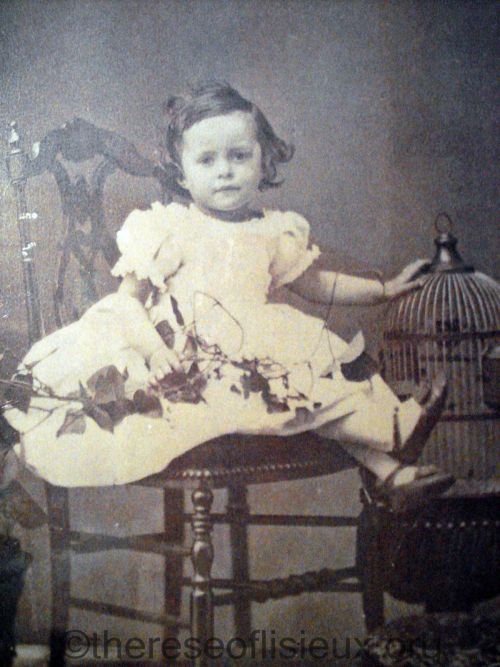
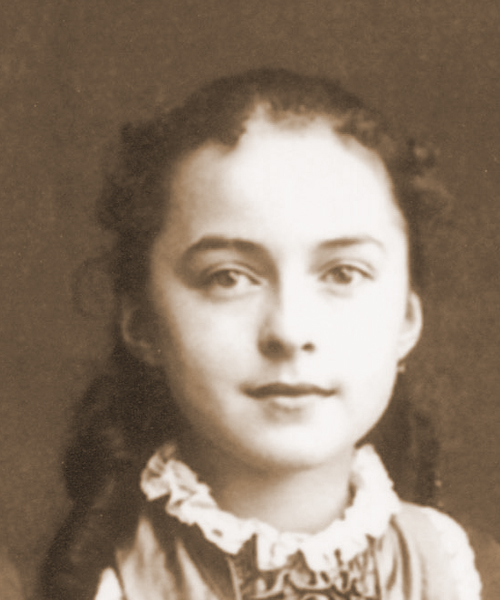
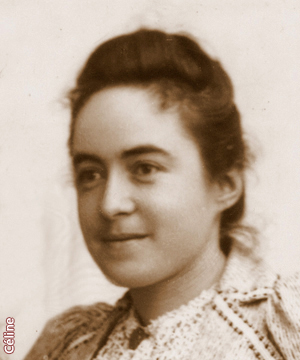
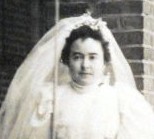
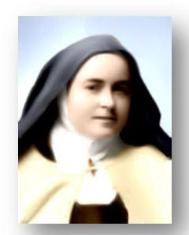
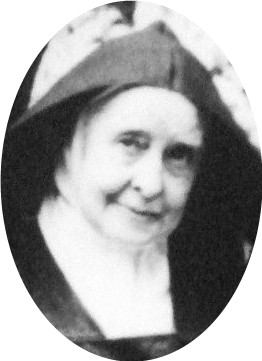
Marie Céline Martin, the seventh of the nine children, came into this world on April 28, 1869, with light brown hair and hazel eyes. Days later, Céline showed the same symptoms as her deceased siblings, and so Zélie sent her to stay with a wet nurse for several months.
Once, as Céline was sitting on the front door step, a poor girl walked by and gave her a snide look, which caused Céline to snap at her, “Go away!” In response, the child approached her and slapped her face. After that, Céline told her mother, “I hate the poor!” Later, her mother convinced her to forgive the child. The next morning, she relented and offered a bouquet of flowers to Our Lady and said to her mother, “I love the poor very much now!”
When Zélie was diagnosed with cancer in 1877, the family tried to shield the two youngest girls from their mother’s suffering. In an attempt to explain her condition to Céline, Zélie allowed her to see the deep swelling and bruising from her shoulders up to her neck. This experience left an indelible imprint on Céline. When Zélie died on August 28, 1877, Céline was only seven years old.
After Zélie’s death, her family moved to Lisieux to be closer to her brother and his wife, Isidore and Céline Guérin. Louis hesitated for fear of leaving their friends and familiar surroundings. However, after much debate between Louis, Marie and Pauline, it was decided to move. Céline entered the Benedictine Abbey of Notre Dame Boarding School with her sister Léonie in 1878. Léonie stayed at the boarding school full-time, whereas Céline was only a day-boarder. Céline was placed in classes with students who were much older than she was. Despite the age difference, she was an excellent student.
The Quesnels, neighbors and friends of the Martins, had a son named Albert, who often gave Céline advice on drawing and painting. On the evening of April 9, 1888, the same day her sister Thérèse entered the Carmel, Albert proposed marriage to Céline (at that time she was 18 and he was 29). She never considered saying “yes” as she knew she wanted to be a nun. However, his proposal made her question whether God was really calling her. As she wrote in her autobiography years later, “I kept telling myself ‘Could this offer, which was made to me the instant Thérèse left me, be an indication of God's will for me?’” After her refusal, Albert entered the seminary and was ordained a priest. Just two months after the proposal, Céline told her father of her own call to be a nun and made a vow of virginity. She did not enter at this time, however, due to her father’s bad health.
By the end of 1888 and into the beginning of 1889, Louis’ health severely deteriorated. He suffered a couple of minor strokes and frequently wandered off. On February 12, 1889, he was sent to a psychiatric hospital in Caen. Léonie and Céline went to Caen to visit him once a week for the next three years (the hospital allowed one visit per week).
In the Spring of 1889, Céline and Léonie traveled with their Uncle Isidore and Aunt Céline to Paris for the World’s Fair and witnessed the unveiling of the Eiffel Tower. Weeks after returning to Lisieux, Léonie and Céline moved into their aunt and uncle’s house since the lease on Les Buissonnets had ended. During the course of three years, while Louis was staying at the psychiatric hospital in Caen, he suffered a paralyzing stroke. The family brought him back to Lisieux on May 10, 1892, and Isidore arranged for Louis, Léonie and Céline to live in a house near theirs.
On July 28, 1894, Louis suffered another heart attack and died on July 29. Finally, it was time for Céline to join her sisters at the Carmel. Initially the community members were not happy about having four siblings in the same monastery, but they eventually all consented—with the exception of Sr. Aimee. Thérèse prayed: “Dearest Jesus, if Sister withdraws her opposition, I shall consider it as a sign that my father went straight to Heaven.” Shortly after, Sr. Aimee, in tears, told Thérèse she would gladly welcome Céline.
Céline entered on September 14, 1894, at the age of 25. One of her biggest obstacles was her straw mattress, which gave her many sleepless nights. Next was the unappetizing food, to which it took her almost a year to adjust. The first lesson in humility that Thérèse taught her was to kiss the floor every time she entered her cell—whether it was ten, twenty, or forty times a day. She survived her postulancy and became a novice on February 5, 1895. When Fr. Delatroette heard her name was to be Sr. Marie of the Holy Face, he objected as he felt it was more fitting that she take the name of a recently-deceased founding member of their monastery, Sr. Geneviève of St. Teresa.
On February 24, 1896, the day of Céline’s profession, she knelt before Pauline (Mother Agnes) and recited her prayer, “Lord, my ambition is to be like a little child in the Father’s heavenly home.” Not long after, she celebrated her veiling on March 17, 1896.
In April 1896, Thérèse showed the first signs of her disease, and fell seriously ill a year later. On July 8, 1897, she was moved to the infirmary, where Céline was assistant infirmarian. On July 22, in an effort to comfort Thérèse, Céline began to read a passage on the happiness of Heaven. Thérèse stopped her by telling her that wasn’t what attracted her to Heaven, but that the attraction was, “Love! To love, to be loved, and to return to the earth to make Him loved…” Moments before her death on September 30, 1897, Thérèse turned to look at Céline for the last time. Céline later said, “The memory of that last look sustains me and is an inexpressible strength for me.” After Thérèse died, Céline ran outside in hopes of seeing her spirit ascend to Heaven. But the visibility was obscured by clouds and she said aloud, “If only there were some stars in the sky!” The clouds and the rain suddenly dissipated and the stars shone through. It was a sign for her that her sister’s soul made it to Heaven. On October 4, 1897, Thérèse’s funeral was celebrated, and she was buried in the new cemetery for the Carmelite nuns.
The beginning of the process for Thérèse’s canonization began in 1910. Her sisters were each asked to give depositions. When it was Céline’s turn, she continually used the phrase “The Little Way”. The Promoter of the Faith asked her not to, as he was fearful that it would end Thérèse’s cause. But Céline said, “If it is defeated, it is defeated; but since I have sworn to tell the truth, I must give witness to what I have seen and heard, no matter what happens!” Despite the objections by the clergy, the process continued and, as history has proven, “The Little Way” has withstood the test of time.
On November 14, 1916, as Céline’s devotion to the Holy Face and the Passion of Christ increased, Mother Agnes of Jesus (Céline’s sister Pauline), gave her consent to change her religious name to Sr. Genevieve of the Holy Face and of Saint Teresa. On July 11, 1937, Pope Pius XI sent Cardinal Pacelli to Lisieux for the solemn blessing of the Basilica of St. Thérèse. When the opportunity came, Céline told him that she had a sense he would be the next pope. He responded, “Pray rather that I will have the grace of a happy death. That’s more dear to me.” After the death of Pope Pius XI, Cardinal Pacelli did become the next pope, choosing the name Pope Pius XI. When Céline heard the news, she was greatly satisfied to have played the role of prophet.
When Céline’s sister, Marie, died on January 19, 1940, Céline experienced the scent of roses, when there was no explanation for the aroma. She said, “I understand how the death of saints is precious in the sight of God.” A few months later, on May 10, 1940, France was invaded by Nazi Germany, and outposts were set up in most of the major cities in France, Lisieux included. For several days, beginning on D-Day, June 6, 1941, bombs, including several weighing 500 pounds, rained down on Lisieux, with the Carmel in the middle of it. The Benedictine boarding school that the sisters had attended was completely destroyed. As the buildings surrounding the Carmel were set ablaze, Céline, Pauline, and the other nuns, took refuge in the side chapel of the crypt in the Basilica of St. Thérèse, alongside the people of the town. Living a cloistered life and then being forced out into the world was challenging for all the nuns. Céline especially found it hard to bear the constant attention of the townspeople, who took turns introducing themselves and asking questions. Through prayer, peace overcame her and she made herself available to anyone who sought her attention. Finally, the British Allies advanced into Lisieux, and soon it was no longer dangerous to venture outside. Pauline and Céline took this chance to visit their family’s graves and their former home. In August, it was decided it was safe to return to the monastery.
By the late 1940s and early 1950s, several books had been written about St. Thérèse that either watered down or distorted her message. To counteract these, Céline wrote a summary in February of 1950, which outlined all the misinformation and clarified all the half-truths and lies. She also wrote two books to dispel negative rumors about her parents, The Mother of the Little Flower and The Father of the Little Flower.
When Céline’s sister Pauline died on July 28, 1951, they’d been in the Carmel together for nearly fifty-seven years. Céline felt the loss very deeply, and said, “Pauline and I were two old women fused together these last years; however, I am blessed to be the last surviving member of my family.” Céline received permission from the new prioress to keep a photograph of Pauline in her cell as a gentle reminder that she was always with her.
There were rumors outside the monastery that Céline was suffering from mental illness and had been sent to an asylum. The gossip became so widespread that she was encouraged to come forward and engage in conversation with any dignitaries who came inside the monastery. Céline did as she was asked, and the rumors were dispelled.
Céline’s 60th anniversary of her profession was celebrated on February 24, 1956, when she was nearly 87. Shortly after, she came down with a severe flu. This was in addition to the many afflictions she’d been suffering with for years, including Rheumatism, sciatica, and gout. Her attitude was very peaceful: “I have suffered in all sorts of ways, but suffering in itself has no value. One has only to look at the demons to know that. But accepted with loving abandonment to God, suffering is a divine seal on our lives.”
When the cause for her parents’ beatification was formally introduced in 1957, Céline was asked to give depositions about them, since she was the last surviving family member. The first set of proceedings for her father lasted three months. The next proceedings for her mother lasted two months. At 88 years old, Céline persevered through the entire process. As part of the proceedings, in October 1958, Louis and Zélie Martin’s remains were unearthed, placed in new coffins, and reburied at the Basilica of St. Thérèse. Céline transformed the original coffins into relics, working endlessly until the task was finished on December 12, 1958. After that, her health took a downward turn.
Céline was diagnosed with congested lungs and a bad heart and was moved to the infirmary. She said, “The little miseries of old age are burdens I often take not with a smile, but rather with a sigh. And yet, I look upon all my imperfections as treasures because, though I regret them, I think after I die, they will draw down God’s pity; and when He has pity, He also has mercy.” The news spread throughout the world that Céline was terminally ill and, on January 1, 1959, she received an Apostolic blessing and a message from Pope John XXIII, in which he told her he was praying for her. She was surprised and ecstatic over receiving them. At the latter part of that same month, Céline experienced a violent attack, as if someone were underneath her bed hitting her. She asked the infirmarian to light a candle and throw holy water on her as she believed she was being assailed by something evil. She said to a fellow nun, “I think the devil has been given permission to torment me. Fortunately, his actions are in vain, because the Lord is fighting for me.”
On February 4, 1959, at the age of eighty-nine, Céline suffered a minor heart attack and her body swelled with fluid, making it difficult for her to breathe. On the morning of February 25, her community heard her repeating continuously, “Jesus!” and saw her in a state of ecstasy, which lasted for ten minutes. At 9:25 a.m., she died. To notify the townspeople, they rang the monastery bells. Then the Basilica of St. Thérèse joined in and rang theirs. Later, the radio announced the death of the last surviving sister of St. Thérèse. For three days, Céline’s body was placed in the choir where thousands of people from around the world came to pay their respects. On February 28, her funeral was celebrated, with many religious, several bishops, and numerous devotees of St. Thérèse in attendance. Afterwards, she was buried with her sisters beneath the Basilica.
To read more about the sisters of St. Thérèse, go to the website, www.martinsisters.org.
